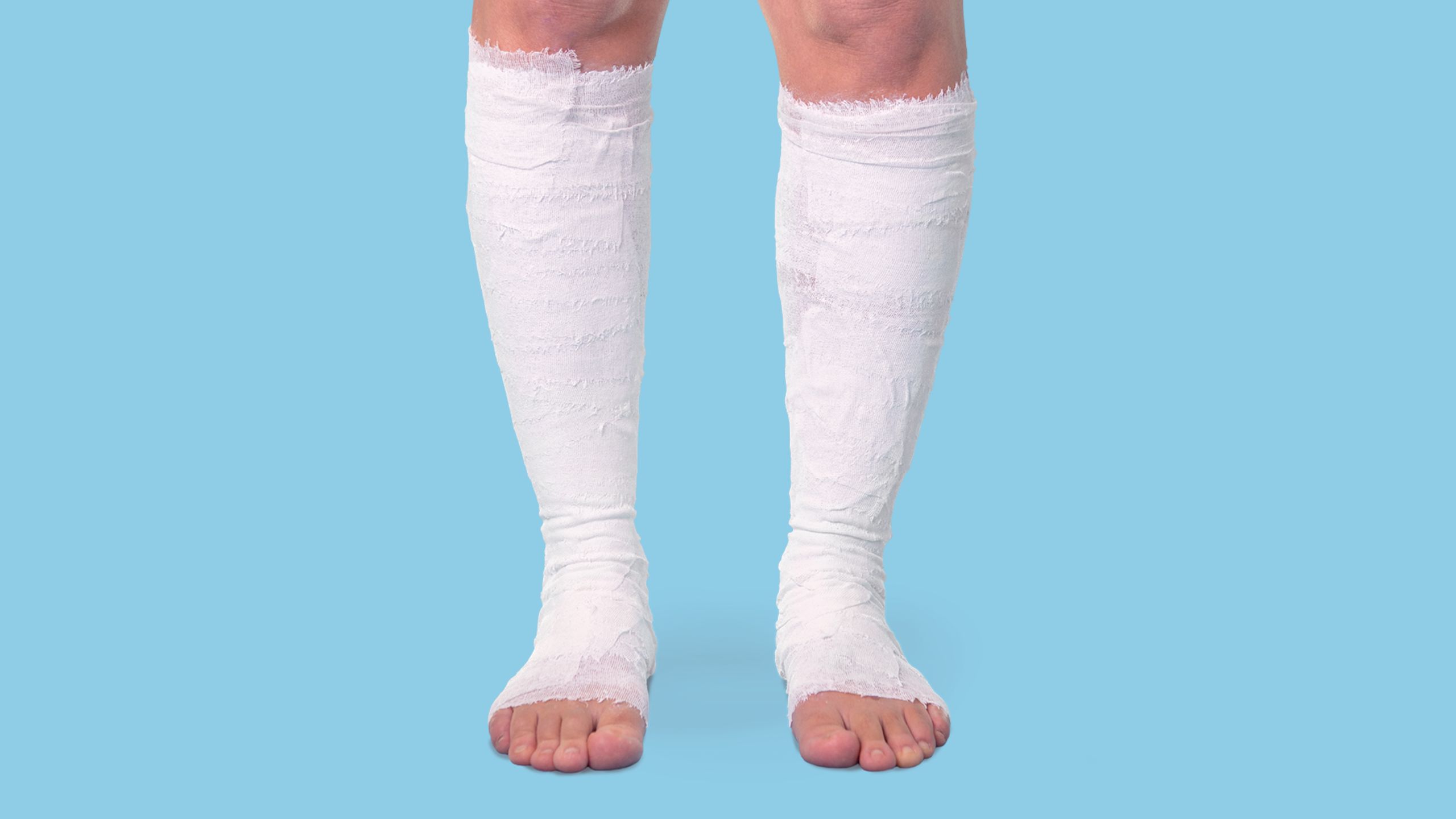Zinc has been used for over 3,000 years to treat skin conditions and wounds thanks to its antiseptic, astringent, anti-inflammatory and anti-microbial properties. For decades, clinicians have relied on the topical application of zinc oxide, particularly in zinc-impregnated paste bandages, to support the healing process of venous leg ulcers and to soothe associated skin conditions(1).
The Most Common Hard-to-Heal Wound
In Australia, venous leg ulcers (VLUs) represent 70% of hard-to-heal wounds in the community healthcare setting and are the most common kind of chronic wound seen in primary care(2).
Lower limb skin conditions can often be linked to chronic venous insufficiency (CVI), adding further challenges for patients. To achieve better outcomes, there is a need not only to treat the ulceration but also to manage surrounding dermatological conditions such as varicose eczema and dermatitis.
It is thought that only around 53% of VLUs heal fully within 12 months(3). This highlights the need for long-term management, as patients frequently experience flare-ups of chronic skin conditions that require ongoing support.
Primary and community care clinicians play a vital role as the first point of contact. They are responsible for conducting comprehensive holistic assessments, delivering appropriate treatment, and referring patients onto specialist services as needed. A wide range of emollient therapies and dressing products are available to support the management of ongoing skin conditions and to ensure effective care.
Managing the Surrounding Skin
For patients that present with a lower leg ulcer, it is good practice to conduct an initial and ongoing comprehensive clinical assessment to confirm the ulcer aetiology to inform the treatment and management plan(4).
Once an assessment is complete, the following steps are recommended in the ANZ Clinical Practice Guidelines for Prevention and Management of Venous Leg Ulcers (2011)(5) – to support management of the affected surrounding skin:
- Identify any redness near the ulcer which may be related to infection, venous eczema and/or hypersensitivity, requiring further investigation and treatment.
- Review current topical agents while considering hypersensitivity reactions.
- Consider applying a topical barrier preparation to the peri-ulcer skin to protect it from exudate.
- Venous eczema can be treated with a wide range of products, including:
- topical corticosteroids
- topical zinc-impregnated bandages
- other dermatological preparations
Benefits of Zinc Oxide
Zinc is a metallic trace element essential for health, ranking second only to iron as the most abundant trace element in the human body. Approximately one-fifth of the body’s total zinc content is found in the skin, where it plays a crucial role in functions such as supporting the immune system, tissue maintenance and wound healing(1).
Within the skin, zinc is located intracellularly and in the extracellular matrix (ECM) in the form of protein complexes. It stabilises cell components and membranes, facilitating key processes such as cell division, migration, and maturation – all vital to wound healing(6).
When applied topically, zinc oxide helps address the local zinc deficiencies and enhances the healing process by supplying this vital trace element to support skin recovery(7).
Zinc Paste Bandages
Zinc oxide can be applied directly to leg ulcers and the surrounding skin using zinc-impregnated paste bandages. These bandages soothe venous eczema and associated inflammation while also promoting epithelialisation(7).
There are two application options:
- VISCOPASTE PB7TM: a versatile cotton bandage impregnated with 10% zinc.
- ZIPZOCTM: a single-use, sterile stocking containing 20% zinc oxide ointment, free from preservatives.
Both VISCOPASTE and ZIPZOC can be worn up to seven days(8). They can serve as primary contact layers and, if deemed appropriate by a clinician, may be used under compression therapy. However, if the skin is fragile or friable, consider using a suitable protective primary dressing with an open weave that would allow the zinc oxide to be absorbed. If the exudate levels are heavy, consider using a suitable secondary dressing.
Conclusion
Managing venous leg ulcers and associated dermatological conditions can require significant time and clinician attention within primary and community care settings. The healing journey can be prolonged and complex.
VISCOPASTE PB7 bandages and ZIPZOC medicated stockings have a well-established role within clinical treatment regimens. These therapeutic options offer symptomatic relief and comfort while actively supporting the wound healing process.
Always refer to the information for use and prescribing information before application.
References:
- Maher SF (2015) Chronic venous leg ulcers — role of topical zinc. Chronic Wound Care Management Res 2: 95–100
- Weller, Richards, Turnour and Team. (2021). Venous leg ulcer management in Australian primary care: Patient and clinician perspectives, International Journal of Nursing Studies, Volume 113, 2021,103774, ISSN 0020-7489, https://doi.org/10.1016/j.ijnurstu.2020.103774
- Guest JF, Fuller GW, Vowden P (2018) Venous leg ulcer management in clinical practice in the UK: costs and outcomes. Int Wound J 15:29-37
- Venous Leg Ulcer Guideline Committee, Clinical Practice Guideline for Venous Leg Ulcers: Assessment. Emily Haesler (Ed.). Hong Kong Enterostomal Therapists Association, New Zealand Wound Care Society, Wounds Australia and the Wound Healing Society of Singapore. 2025.
- Australian and New Zealand Clinical Practice Guideline for Prevention and Management of Venous Leg Ulcers (2011).
- Lansdown, ABG, Mirastschijski, U, Stubbs, N, et al (2007) Zinc in wound healing: Theoretical, experimental, and clinical aspects. Wound Repair Regen 15: 2–16
- Agren M (1990) Studies on Zinc in Wound Healing. Linkoping University Medical Dissertations No. 320. Department of Pathology II, Faculty of Health Science. Linkoping, Sweden.
- Evolan Pharma (2020). Data on file. Danderyd, Sweden.

